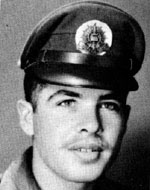Sharapberg, Giora
The son of Yeshayahu and Tova. Born on December 3, 1943 in Hanita, the days were World War II, and the period was stormy for the entire world and for the Jewish community in Eretz Israel in particular, the World War was over and the struggle against British rule and the struggle of the resistance forces among themselves He was one of the founders of a “workshop,” and for one hour he would have been unaware of the fact that in this workshop a protective weapon was created for the Jewish community in preparation for the establishment of a ” Following the UN decision to establish the Jewish state and partition of the country (in November 1947), it became clear to his parents and Hanita that the Galilee from the Arab (And Hanita in it) was meant to be in the Arab state – and it was not long before the siege began in the Western Galilee, but the besieged farms decided to stay in their places and fight for their existence. Giora absorbed the pioneering atmosphere of a mountainous school settlement with constant security alertness, and Hanita was connected to all of his delicate soul. Giora attended elementary school in Hanita and after completing his studies, he moved to high school in the Gesher Haziv area. He loved a book and music, and there was almost no place where he showed no interest or knowledge. He excelled in his studies and was one of the youth brigade. “Naughty” was his answer was intense and playful, admiring and forgiving. He was not particularly conspicuous in his friends, and his kindness and forgiveness were evident in him. In August 1962, he was drafted into the IDF, and completed his officer’s course in December 1963. Upon returning home to Hanita, he took off his uniform, dressed in work clothes, and went to the orchard where he said to work in the coming days. In 1965, he was promoted to lieutenant colonel, and after returning to work in the orchard, he decided to send him to the Ruppin College to train him to become a production manager at the Hanita precision factory. He did the experiment and succeeded, and only after that did he go to study at the Ruppin Midrasha, but about a week before he was drafted into the army After a week, Giora was on a short vacation home, and his humanitarian character could not accept the cruelty of the war, and when he saw the parents and children in the farm digging trenches in the rocks, he remarked: “There will be no need for this; Giora returned to his unit for the engineering corps, and after days of watching his unit moved to the Jordanian front, believing that there would be no need for preparations for the battle, he embarked on a war full of hope and his Lev lasted two months later when he was about to take a wife. On June 6, 1967, Giora was killed in a battle near Jenin, when he was hit directly by the armored personnel carrier in the half-track. He was laid to rest in the military cemetery in Nahariya and was later transferred to the Hanita cemetery. Hanita Group published a booklet in his memory called “Giora”. “Built in the Rocks,” the children’s magazine of the group, was dedicated to his memory. In the book, “On Their Way,” published by the Union of the Kibbutzim and the Kibbutzim in memory of the members of the Union who fell in the battle, things were brought to its attention. In “Corps of Engineers in their Heroism” published by the Engineering Corps, his memory was raised and his name was commemorated in “The Steelmen” and in “Battle of Emek Dotan” for Aviezer Golan. We also discussed the subject of “The Group’s Niv.” In a booklet in memory of the heroes of the “Barak” Brigade, his name was commemorated and his memory was raised.
